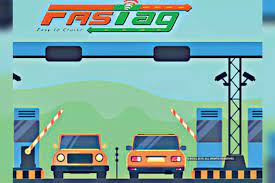NHAI Takes Steps to Ensure Waiting Time of Not More Than 10 Seconds Per Vehicle at Toll Plazas
New Delhi, 26th May 2021: In order to ensure minimal waiting time at the toll plazas, National Highways Authority of India (NHAI) has issued guidelines to ensure service time of not more than 10 seconds per vehicle even at peak hours at the toll plazas on the National Highways.
The new set of guidelines will also ensure seamless flow of traffic at the toll plazas by not allowing vehicles to queue up more than 100 metres. Although in most of the toll plazas, there is no waiting time after mandatory 100% Fastag, even then if there is queue of waiting vehicles of more than 100 metres due to some reason, the vehicles will be allowed to pass without paying toll till the queue comes within 100 meters from the toll booth. For this purpose, a yellow line at a distance of 100 meters from toll booth will be marked in each toll lane. This is to inculcate further sense of accountability in toll plaza operators.
Since NHAI has successfully transitioned to 100% cashless tolling from mid of Feb 2021, the overall FASTag penetration in NHAI Toll Plazas has reached 96 % and many toll plazas have 99% penetration. Keeping in view the growing Electronic Toll Collection (ETC) penetration in the country, it has been emphasized to have a new design and construct the upcoming toll plazas as per traffic projections for next 10 years to have an efficient toll collection system.
NHAI values the time of commuters and is committed to provide them safe, smooth, and seamless journey on National Highways. As social distancing has become the new norm, commuters are increasingly looking at FASTag as a toll payment option as it nullifies the chances of any human contact between the drivers and the toll operators. The constant growth and adoption of FASTag by the highway users is encouraging and has helped in bring more efficiency in toll operations.

